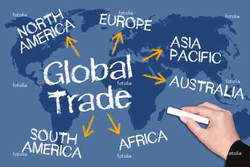 You shouldn’t. That is, you shouldn't select a stand-alone “digital” or “social” agency. That is simply a red herring. If you want to succeed in social media, you ought to look for an agency which can implement a stakeholder relations and reputation management programme across all media. Social and digital media simply offer different channels through which to spread your message. They complement traditional media and should be utilised holistically. Your efforts need to be part of a rounded programme, seamlessly integrated across all media. And if you do opt for different agencies or practitioners, be sure to keep them fully informed regarding your projects and activities. For example, we found out that one of our clients had a radio advertising burst when we heard it on air for the first time. What a pity we weren’t informed earlier, as the message could have been amplified via social media. We have previously written about the option of outsourcing your social medial campaign (Are most small and medium businesses wasting their time on Twitter?) ), but how do you know that an agency can handle social media? There are essentially three reasons to outsource the management of your social media campaign, and these give insight into the way to choose an agency. 1. TalentRunning a social media campaign requires specific skills in terms of:
2. TimeA well-run social media campaign is time and labour intensive. It is “social” for a reason: it requires human interaction. This cannot – and should not – be faked, whether it is proactive or reactive engagement. Companies and agencies often resort to using automated programmes to deal with the issue of time management. These can be excellent tools to organise and manage accounts, especially across different accounts and different media, but they need to be used with caution: imagine the scheduler pumping out tweets at night or over a weekend when some heart-breaking disaster occurs which make your tweets seem very inappropriate or even insensitive. “Bot” accounts are absolutely fine, if they are clearly identified as such. Two examples would be @MarmiteBot which replies with “My mate marmite” to every tweet with the words “marmite” and “toast” in it, and @RedScareBot which responds with a random comment each time “socialism”, “communism”, “communist” or some other variation feature in a tweet. So how do you identify an agency that would have the capacity to handle your account and use intelligent beings to manage it on your behalf? Look for the following factors:
3. TopicsWe have frequently referred to the importance of quality content in social media (see: Content is King). This is no different to ANY stakeholder relations programme and the agency should be able to reflect that. To determine if an agency can handle the generation of suitable, high-quality content, ask the following questions:
And finally, you need to consider the agency’s overall ability: 4. Track recordYou need to take into account an agency’s success factors and overall ability within stakeholder relationship management in general and social media in particular.
Consider the following elements:
Outsourcing a social media campaign can be liberating for a business, but only if the correct agency is selected and the two parties can operate together for the overall benefit of the business. By taking the time to uncover the most suitable constancy to manage your business, you will be in a better position to reap the rewards of a social media campaign.
2 Comments
 By Mel Brooks As active managers of our clients’ social media accounts, we have looked at over a thousand small and medium sized business (SMME) Twitter accounts. And we have noticed that although these accounts have been opened, it is clear that most have become dormant: if you have not tweeted in three months you are effectively not on Twitter. In fact, if you have not tweeted in a week, you may as well not be using the medium. There are, however, some SMMEs that do tweet – but this is often what happens:
- Tweet schedulers that mindlessly pump out commercial messages have been set up. Many of these will not inspire potential customers to follow a link or make contact. Few, if any, other messages that contain useful content is ever tweeted. SMMEs are attracted to Twitter because it is free, and then the social-media box can be ticked. However, the production of good content is not free: it is time consuming and labour intensive to be produced in-house. An alternative is to outsource the provision of content. Enter the “digital” agency. The production of content is often outsourced to entities where a “techie” is tasked with the job – someone who knows the medium rather than the client’s business. But, the production of quality content requires a knowledge of the business itself and the industry in which it operates, in addition to marketing and advertising. These then need to be packaged via excellent writing skills. At Cambial Communications, we have seen that good content can make a big difference (See: Social media, content is king). Here are three examples: Client A This twitter account was run by a digital agency from October 2011 to January 2013. Over the 16 months, the number of followers had grown to 620. After taking over the account in February 2013, we had grown the following to over 6,500 in only eight months. There is a high level of the useful-content tweets in addition to promotional tweets. Enquiries are regularly received in addition to the interaction which takes place. This client’s Klout score is consistently higher than that of its competitors. For this client we adopt a “follow-back” policy (see: To follow back or not? That is an important question)which has contributed to the high level of interaction of its followers who feel they are being listened to and also accounts for the high level of retweets received. Client B This client is a professional consultancy which is owner managed. The production of content was not a problem but time was. A short-term intervention was needed to grow the follower base and provide assistance with content. As a result the number of followers grew from 227 to over 9,500 in a five-month period. Client C We acquired this new client with less than 200 followers and we doubled the following in the first three days. However, growing followers for this client will take time as it has specific requirements for its follower base: they need to be either potential clients, or those that offer a route to reach potential clients. The point is that obtaining masses of followers is not an end in itself – one needs appropriate followers. In each instance, we have grown the following organically: we are strictly opposed to the buying of followers. Businesses should be on Twitter to establish and grow their brands in the social-media area, to listen to their market and, more importantly to generate revenue. It is also important to note that managing a Twitter account is not simply a case of chasing followers, far more important is the quality of those followers, their level of influence and the extent of interaction and engagement generated. Getting assistance to able you to get the maximum benefit from your social media activities is a challenging task – but the getting right assistance will produce benefits well in excess of the fees involved. Do you have any stories to share of wasted opportunities on Twitter accounts? We'd love to hear them ********************************* Please follow us on Twitter to receive more information.  By Mel Brooks If you’re on Twitter purely in your personal capacity and for fun, the above question is irrelevant. Your personal “follow back” policy is entirely your choice. For businesses, though, the matter is entirely different. Most businesses, particularly large companies, do not follow back those who follow them. This represents a wasted opportunity – the opportunity to listen to the market. Much is made by marketing specialists of the need to listen to customers. While following back thousands of followers may seem to be unnecessary as it is impossible to read all the tweets on a timeline, it is possible to view a sample of tweets regularly. In so doing, it is then possible to get a feel for the market. It is also important to understand that by following back one is showing respect to customers. The effect that this could have is an important consideration. By following existing and potential customers, an organisation is saying: “We value you; we want to hear you; you are important to us”. Frankly, it can be construed as arrogant not to return a follow. Large corporates are also largely guilty of tweeting a constant stream of commercial messages about their products. Who would listen to a radio station that broadcasts only commercials? In this regard read: Social Media: Content is King. Tweet-schedulers also need to be used with caution. Their use can be obvious to followers and they risk removing the “social”’ element from social media. While they represent an opportunity for cost reduction and assist enormously in managing the time-consuming aspect of running an effective Twitter account, they can reduce the effectiveness of the medium. To get a return it is always best to apply real resources to the medium. Twitter is about relationships and we all know that, to succeed, relationships take real work. A South African business that is getting this right is Nedbank. Not only does the company follow back its followers, but it is responsive and interactive too. You should never remove the human element of social media. What are your thoughts on following back Twitter followers? Do you like it when someone follows you or follows you back?  An economy is called “open” if it conducts a significant amount of business (trade) with other countries – and this trade can be in physical goods or services. There is a popular misconception that by reducing imports and supporting local production, jobs will be created locally, thus increasing a country’s economy, as measured by gross domestic product (GDP). But such a policy would only lead to a downward spiral in the economy – we only have to look at the crushing impact of sanctions on the South African economy in the late 1980s and early 1990s when the country suffered a protracted recession, declining by more than 3% (annualised) at one stage. To get an idea of the impact of economic isolation, let’s take an extreme example: let’s imagine an economy of one person. Imagine that each individual opted to produce everything they required entirely by themselves. This would include producing one’s own food, the utensils to cook that food, the stove on which to cook it, and so on. Imagine having to produce your own clothing, your own car, your own home, your own medication – anything at all that you require to enjoy the lifestyle that you do. Clearly, we would spend most of our days just producing the basics for survival – and we would have an appalling standard of living and a dismal lifestyle. Thank goodness we don’t have to do that. Rather, we each specialise in producing something that we are good at and that is reflected in the salary that we earn – so we seek out the best salary that we can get. We then engage in trade as an individual – we sell our skills and we use the income to buy those things that we can’t produce as efficiently. The larger the base within which we can trade, the greater the choice of goods and services we have available to purchase – and the better their prices. The larger the base within which we can sell our services (as a human resource) the better the price (salary/wages) we can get for our efforts. Now let’s look at this from the point of view of a country. The more that a country trades with other nations, the GREATER the standard of living it can enjoy. By focusing on producing what it can produce more efficiently than other countries, and then trading with other states, everybody can be better off. China has proved this by becoming a manufacturing hub. Since liberalizing its economy in the late 1970s, the Chinese economy has enjoyed one on the most spectacular and enviable increases, taking the nation from the low-income category to its current middle-income status. India has become a significant developer of software, taking that country into increasingly higher salary bands. South Africa has exceptional capabilities in several areas and it is these which we need to develop and exploit as much as possible. This will provide the necessary income to import those things which we cannot manufacture as competitively and, thus, benefit from having more. Some of the areas where I think we should focus on are tourism in general, but also medical and sports tourism, the film industry and call-centre services. There is also need no reason why South Africa should not become the Financial-Services hub of Africa. The same applies to aviation maintenance and repair services. What industries do you think South Africa should opt to build and develop? by Mel Brooks
Social media has been a hot topic for a few years now leaving many businesses, large and small, feeling the need to have a presence on social media platforms. And there is a bewildering array of these. To feed this desire, a large phalanx of self-proclaimed “Gurus” has emerged. They use their tweet-scheduling applications to bombard on Twitter to all who follow them – relentlessly. The links in their tweets go to articles they have written, while many of them have the books they have for sale advertised somewhere on the article page. Some also offer training in the use of social media platforms. But what is Business doing in the Social Media arena? Many of the large companies have clearly spent a considerable sum developing their presence on the various platforms. Some of them make very good use of this form of media. I do, however, wonder about those large companies that merely use, for example, Twitter as an extension of their call centres. Twitter allows instant communication with followers and conversely allows their followers to communicate with them. For a follower to then receive a (probably) bot asking the follower to call the call centre number provided somehow takes the “social” out of social media. People want to be heard – not brushed off to some multi-choice menu when they call. Some small businesses fare no better. I have come across many which last tweeted months earlier, which seem to suggest that they have given up on Twitter. The point of Twitter is to communicate – but communication needs to be a two-way process, so real interaction is required. It is not sufficient to continuously tweet about how great a business’s products are, nor to fob the Twitterati off with pre-configured, automated responses. People are using Twitter as a means to connect with people, not bots. For businesses, Twitter content should be managed like a radio station. Who would listen to a radio station that broadcasts only commercials? I suspect that nobody would: content is paramount. What is needed is a series of tweets that inform, entertain and educate followers. These can be interspersed with “commercial” type tweets. So clearly there is a need for the production of good content – and that’s the problem for most businesses. In February 2013, when I took over the Twitter account of one of my clients, part of an international education organisation based in South Africa, the followers had been hovering in the region of 600. Today they have over 44,000 followers, leaving competitors in the dust (at least one account is managed by one the largest advertising agencies in the world) and now exceeding all institutions operating in this space. Why? A major reason lies in the content. Many agencies are engaged to run social media campaigns because they understand the medium, rather than because they understand the business. But this means that content generation is left to someone who does not have the capacity or the knowledge to produce it, let alone to interact with client or potential clients. The result is often a string of commercial messages, leading to follower fatigue. Clearly, the number of followers is not an exclusive measure of a successful Twitter account. It is, nevertheless, a measure. While it is impossible to gauge the quality of followers (from a business perspective), I have learned from experience that behind off-beat noms de plume and cartoon profile pictures, there are real people. And if they are having fun on Twitter, it does not rule them out as potential customers. Just think how many of the people who listen to a radio station advertisement are likely to be good prospects for sales. It’s the classic “numbers game” I have another client who had 246 followers when I took over the account. In 73 days, I built this following to over 2,000. There is no secret recipe – it’s all about content and interaction. Blogging, another valuable medium for communicating with customers and potential customers, is also service that I offer. Screeds have been written about the importance of blogs in driving traffic to websites as well as establishing credibility as an industry player. But, once again, it is the content that makes all the difference. In a blog it is possible to write content that in such a way does not comprise commercial messages but rather give the reader the understanding that the business understands the problems customers experience and suggests solutions – without plugging actual products. If well written, they will generate enquiries for a business. I call this “selling without trying to sell”. It works. There are a number of tweet scheduling applications available. All you have to do is compose the tweets and enter instructions as to when they should be tweeted. Isn’t that great? All you have to do is set it up and you can get on with other things. I don’t use them. This goes to interaction and timing. Imagine your scheduler tweeting away and some major disaster occurs. How many people will even read your tweets, let alone follow any links in them? You will probably irritate a lot of people. You’ll also be amazed at the extent to which Twitter has transcended “working hours”. Late last Saturday night, I wondered whether there was anyone actually out there reading the tweets. A look at the “interactions” page showed me that there were – 90% of the tweets had been retweeted – including some of the “commercials”. Running a client’s Twitter account is an 18-hours-a-day, seven-days-a-week activity. Sure, this does limit the number of clients I can take on, but it gives me the ability to constantly monitor, interact and retweet any good comments that are relevant to a client’s business. And in this era of absolute mobility, I remain connected wherever I am. I am on Twitter @Mel_BrooksSA In an article last month in WSJ Blogs on the Four Ways Asia Can Avoid the ‘Middle-Income Trap’, Martin Vaughan notes the IMF's suggestions for the rapidly-growing Asian economies that are at risk of falling victim to the middle-income trap (MIT). The MIT is a situation where rapid economic growth results in rising wages and a manufacturing industry that is no longer competitive on the global stage. These countries lag the developed economies, but have limited opportunities of extricating themselves from the situation. Wikipedia describes the typical characteristics of countries trapped in middle-income status as: (1) low investment ratios; (2) slow manufacturing growth; (3) limited industrial diversification; and (4) poor labour market conditions South Africa is a perfect example of a country that has succumbed to the MIT, so I found the WSJ Blog both interesting and useful from a South African perspective. How can we benefit from these suggestions?:
Although South Africa has recognised this as a critical factor in advancing the economy, progress to date has been notably limited. We saw a massive spurt ahead of the 2012 Soccer World Cup, as we raced to complete the stadia and a few other projects on time, but we seem to have stalled since then. Speak to anyone in the construction industry, from quantity surveyors to builders, and the story is the same: the anticipated government infrastructure spending is failing to materialise. "2. Guard against excessive capital inflows. Money flows from abroad can There are essentially two types of foreign investment into a country: portfolio investment (buying equities and bonds as a passive investor) and foreign direct investment (FDI) (buying at least 10% of a company - a strategic stake - and playing a more participative role in that investment). Portfolio investment is less desirable, as explained by the IMF, investors often withdraw their assets "in a hurry"; FDI, by contrast, is more prized given that it is less volatile. But, there are problems with FDI too: income on those assets leaves the country as "income payments" on the current account and can intensify a current account deficit. So South Africa needs to assess the capital flows and their potential impact carefully. "3. Boost spending on research and development and post-secondary education. Improving ALL education is critical for South Africa's potential to succeed. There are numerous surveys and rankings which reveal SA's complete inadequacy in literacy and numeracy. And in SA this is not restricted to the tertiary phase, but it goes all the way to the foundation phase. I would suggest that this is the single most significant step that SA could take to avoid the middle-income trap. "4. Get more women into the workforce and raise the retirement age. Aging While South Africa does not have the same problem of an aging population, our population growth rate has shrunk to below 1% p.a. In addition, South Africa has bucked global trends by reducing the age for men to receive a state old age pension from 65 to 60, in line with that for women, putting us in danger of rising dependency ratios. Worryingly, it will be extremely difficult to reverse this move, even in the medium term.
|
Hot off the press
Economist, data translator, communicator and fascinated by the world around us. Archives
December 2023
Categories
All
|
 RSS Feed
RSS Feed